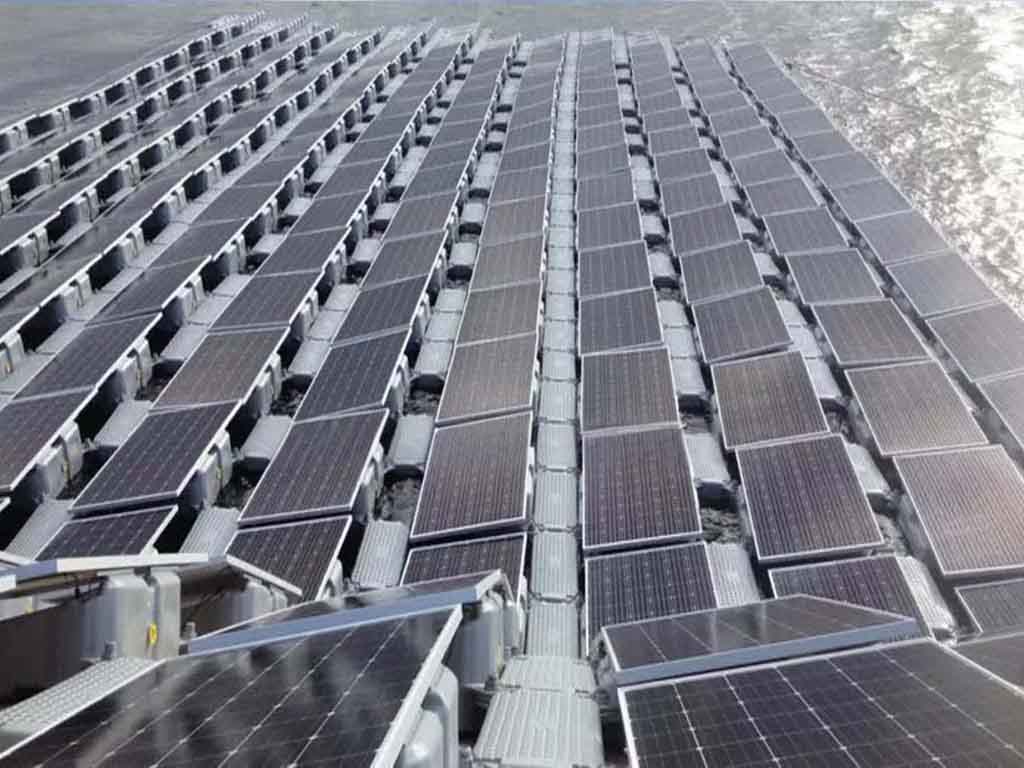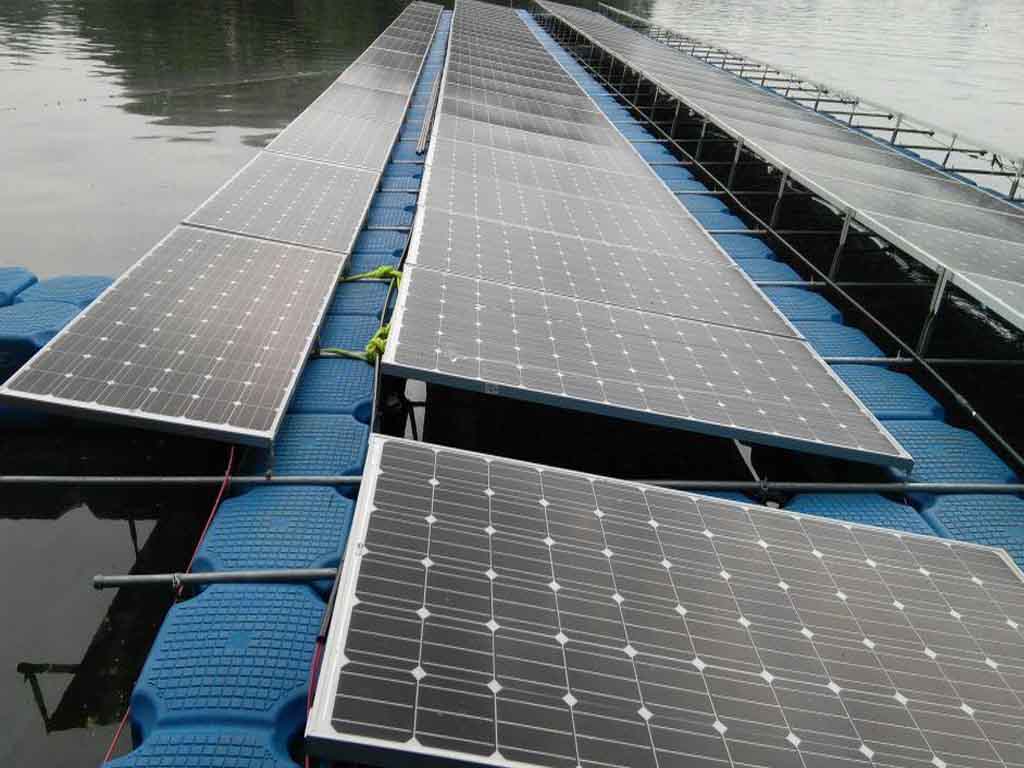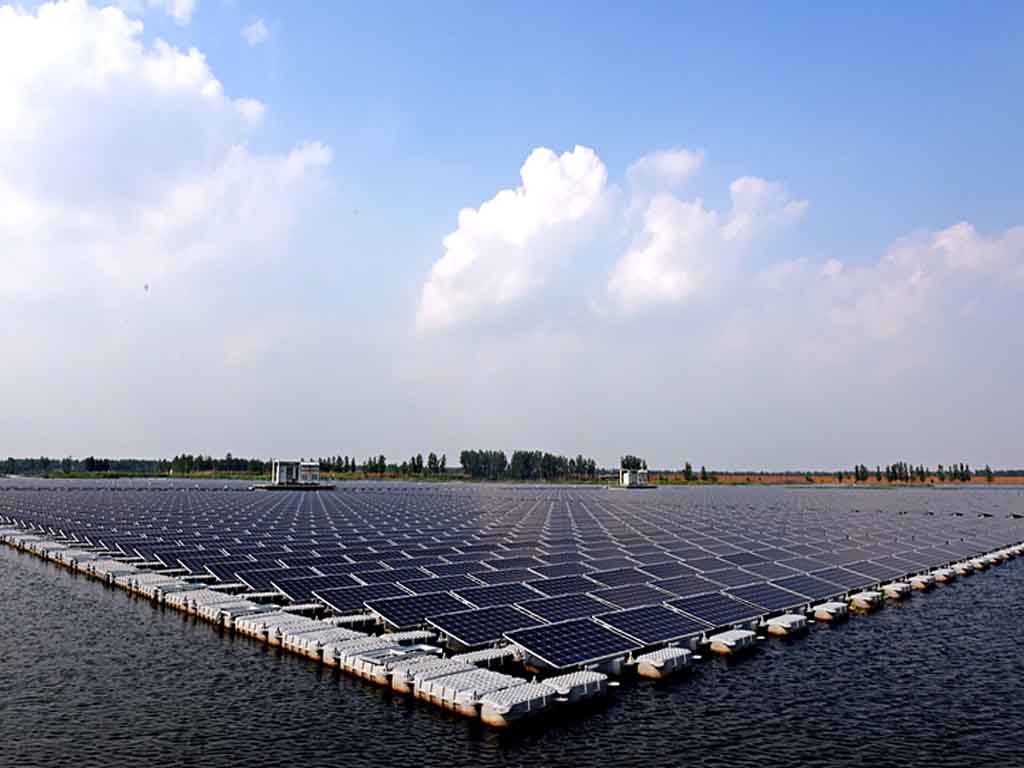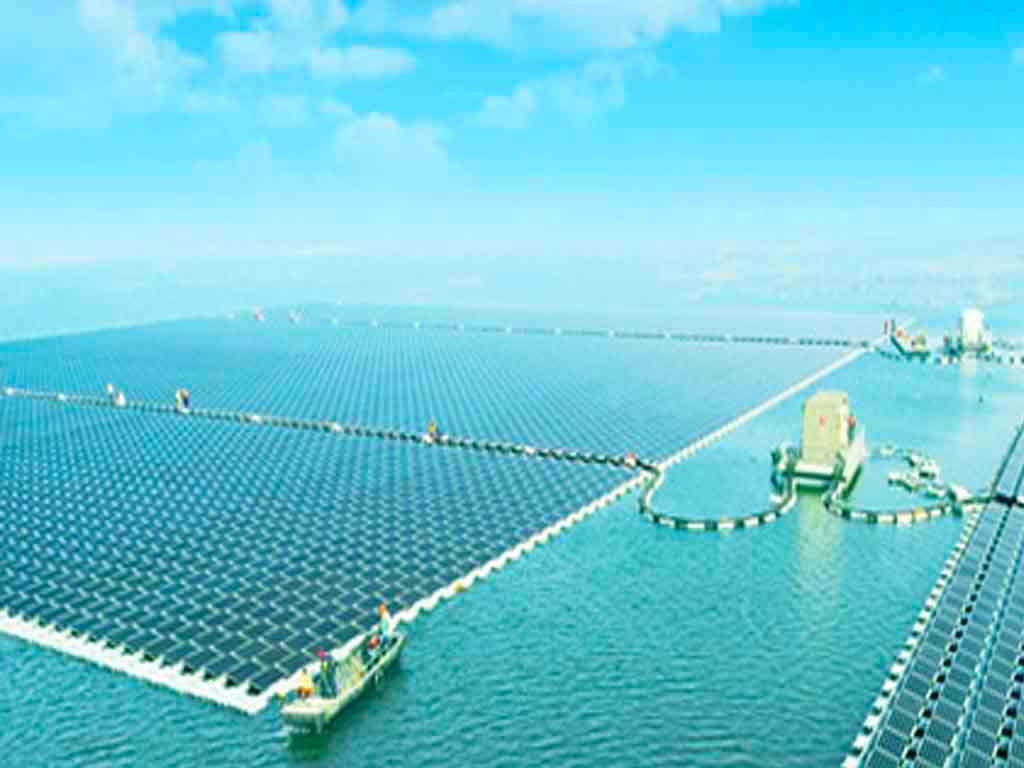High-Efficiency Floating Solar Panel Systems for Reservoirs & Lakes

Power Generation Meets Water Conservation
Floating solar panels leverage water cooling to increase energy yield by 15% while reducing reservoir evaporation by 70%. Our eco-friendly HDPE platforms host photovoltaic systems without disrupting aquatic ecosystems, transforming underutilized water surfaces into power generators.
What are floating solar panels?
Floating solar or floating photovoltaics (FPV), sometimes called photovoltaics, are solar panels mounted on a modular floating pontoon structure that floats on a body of water, typically a reservoir or a lake.
The market for this renewable energy technology has experienced rapid growth since 2016. The first 20 plants, with capacities ranging from a few dozen kWp to several hundred kWp, were built between 2007 and 2013. Installed power reached 3 GW in 2020, with 10 GW predicted by 2025.
How do floating solar panels work?
Floating solar is an eco-friendly method of producing electricity. It combines marine and renewable energy technology. The electricity is sent from this floating pontoon structure through underwater cables to a transmission tower.
Where are floating solar panels in use today?
Floating solar companies are changing the renewable energy game with creative solutions. You can find a lot of floating solar panel projects in pools and the ocean, but most are built in Southeast Asia because of the relatively small availability of dry land over there. China has been quicker to embrace floating solar technology and has built the largest floating solar panels market in the world.
Engineered for Aquatic Environments

HDPE Flotation System
Material: 100% recyclable Plastic
Structure: Triangular stabilization modules
Anchoring: Eco-friendly helix anchors

Smart O&M Integration
Drone Inspection: 99% hot-spot detection accuracy
Robotic Cleaning: 90% water savings vs. manual
Tilt Optimization: Seasonal sun-tracking adjustment
Why Floating Solar Outperforms Ground-Mounted Systems
Parameter | Floating Solar | Ground Mounted | Advantage |
|---|---|---|---|
Energy Yield | 1.15 kWh/Wp/year | 1.00 kWh/Wp/year | +15% |
Water Saved | 12,000 L/MW/year | 0 | Infinite value |
Land Use Efficiency | 0 acres/MW | 5 acres/MW | 100% savings |
Eco-Benefits Quantified: Beyond Energy Production
Floating photovoltaics (FPVs) have been making waves in the renewable energy sector, yet their adoption remains relatively low on a global scale. However, recent developments and growing interest indicate a promising future for this innovative technology.

Water Conservation
Algae in waters can damage local wildlife by depleting the oxygen from the water. The floating solar panels assist in keeping it cool, and decreasing the attainable of algae blooms.

Ecosystem Protection
Floating solar generates clean energy. Using renewable energy helps reduce dependence on fossil fuels’ generated electricity. As a result, there is a reduction in greenhouse gas emissions.

Land Preservation
Ground-mounted solar panels may need more valuable land space. However, with floating photovoltaics, these installations could move to unused space on water, you do not require land space.
Global Adoption and Market Growth Potential
Though United States residents have started exploring FPV technology, East Asian nations like Japan, China, India, and South Korea have seen more widespread implementation. Countries such as these are leading the charge in adopting and investing in this renewable energy solution for use on water surfaces to generate power from renewable resources.
Asian Development Bank (ADB) has played an instrumental role in spreading FPV technology throughout Southeast Asia through regional development projects, furthering its adoption. Emerging markets such as Indonesia, Vietnam, Thailand, and Malaysia present promising opportunities for deployment given favorable environmental conditions and growing interest in renewable energy solutions.
How To Address Challenges and Seize Opportunities
Though promising, FPV adoption does present unique obstacles. Equipment corrosion, maintenance requirements, and intermittency issues must all be resolved, yet battery technology may provide solutions by increasing energy storage capacity while mitigating grid instability.
FPVs present an opportunity to diversify energy supply chains and lessen China's dominance in solar panel production, helping countries strengthen energy security while encouraging technological advancement and collaboration. By investing in domestic and international FPV markets, countries can increase energy security while stimulating technological development through technological collaboration and technological advancement.
The Future of Floating Solar Energy
Given the multitudinous benefits and potential uses of levitating photovoltaic panels, it is highly probable that they shall assume an increasingly pivotal function in the prospect of renewable and uncontaminated energy. Some specialists prognosticate that they shall furnish as much as 10% of the globe's electric demands by the year 2050.
As solar power use can significantly disrupt the local aquatic ecology, scientists should thoroughly research how floating solar panels will impact environmental quality and ecology in each reservoir where they plan to place them. Prioritise using photovoltaics first in manmade reservoirs or canals because this should present less ecological risk.
As nations across the world look for ways to combat climate change and transition to cleaner energy sources, floating photovoltaics (FPVs) provide an innovative yet sustainable solution that balances energy needs with environmental concerns. By harnessing water surfaces as platforms for renewable power production, floating PVs offer one of the more scalable methods available today for meeting renewable energy goals while upholding environmental protection goals simultaneously.
Recognizing floating photovoltaics (FPVs) as integral players in the global energy transition is of critical importance. Governments, businesses, and stakeholders must join together in addressing obstacles to innovation while speeding its adoption - floating photovoltaics can transform the renewable energy landscape and lead us all towards a cleaner, more sustainable future.


















